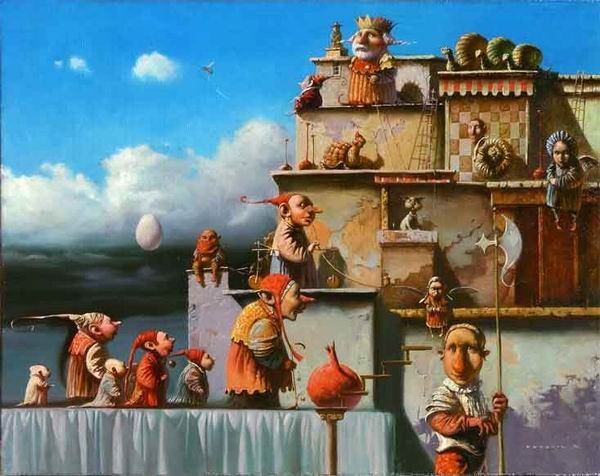
How to Teach a Child to Play Chess - Roarrie's Way!
FM Viktor Neustroev aka @Gertsog posted an excellent piece under the same title earlier today. It is a great article stressing certain important aspects of early chess education that many teachers are missing completely.
When asked by the interviewer about the correct style of teaching beginner, @Gertsog gave this answer [all highlights mine - RP],
"The point is that when learning chess, a child must understand the strategic meaning of each move from the very beginning. The chess player builds a plan based on the weaknesses of the opponent's position. Every move is part of this plan. The figures must be arranged so that they can interact with each other. We can't give a child a clear scheme of placement of pieces in this or that case, but we can and should teach them to understand and adhere to the basic principles. This is the right way to think strategically, to see the relationships and consequences. This should be taught from childhood. Retrain then will be much more difficult, and sometimes it is simply impossible."
This paragraph reveals some big truths about chess, the game of Strategy. I repeat, S-t-r-a-t-e-g-y. They say chess is 99% tactics. Wrong. Chess is 100% tactics, but tactics is subordinate to and only serve strategy!
No let me ask you, what is STRategy anyway? What is its meaning in language?
Well, its root can be found in all Indo-European languages. For example, in Latin, there is a verb STRuere, meanining to build (up), to pile (up). From this generic meaning come derivatives like, to conSTRuct, conSTRuction, STRucture, STRong, STRength, with the opposite meaning in deSTRuct and deSTRoy.
@Gertsog will find the same root in Russian in строить, STRoit' (=build up) and устройство, uSTRoystvo (=arrangement, structure, system, mechanism).
Any of you can check and see that STR in your native (IE) language (you may want to let us all know what your findings are in a comment).
 Spiral Construction--Susan Derges (b.1955)
Spiral Construction--Susan Derges (b.1955)
All life is Struggle, to paraphrase Dr Lasker. To thrive and survive we act from the position of STRength. We need to build up and maintain a strong position from which to profit and harvest the fruits of our efforts.
And now back to Viktor's text above. He nicely expressed the same idea of strategy and building things up in chess terms, stressing its importance for developing a proper mindset of the beginner. Chess is conSTRuction work, folks. I highlighted some words in the author's text carrying this very meaning, arrangement of pieces, placement of pieces, position, and I will take liberty to add some more to emphasize how the process of building things up is essential in life and chess, and language reflects that in all these, form, structure, construction, architecture, configuration, makeup, composition, organization, layout, order, setup, grouping, network, disposition, distribution, design, alignment, etc. (language is often time imprecise, but sometimes gives some important clues![]() ).
).
Next, I also highlighted the word plan above. What is a plan? Just a blueprint for building up a structure!
What about relationships? Well, they are just building blocks of the board structure. The basic building block of any position, of any structure that we construct on the board is Attacking contact, or relationship between two enemy pieces. With two relations we already talk structure, as two determine how the structure is (beginning to get) organized. Relations determine how the need is met, and the nature of the need. Relations and needs determine how we (strategically) act.
Okay, now the point of all this post.
In his text @Gertsog gives an explanation how to get the beginner started, "Tell them about the pieces, show them how they walk. Ask your child to "chop" opponent's pieces, etc."
I put How to Walk, that is How to Move in bold. My question to @Gertsog and all of you reading these lines is this,
If all chess, the game of STRATEGY, is a process of building position up, why we get started with How chessmen MOVE?
Why don't we get started with How they establish RELATIONSHIPS?
Why don't we get started with STRUCTURE?
.
.

